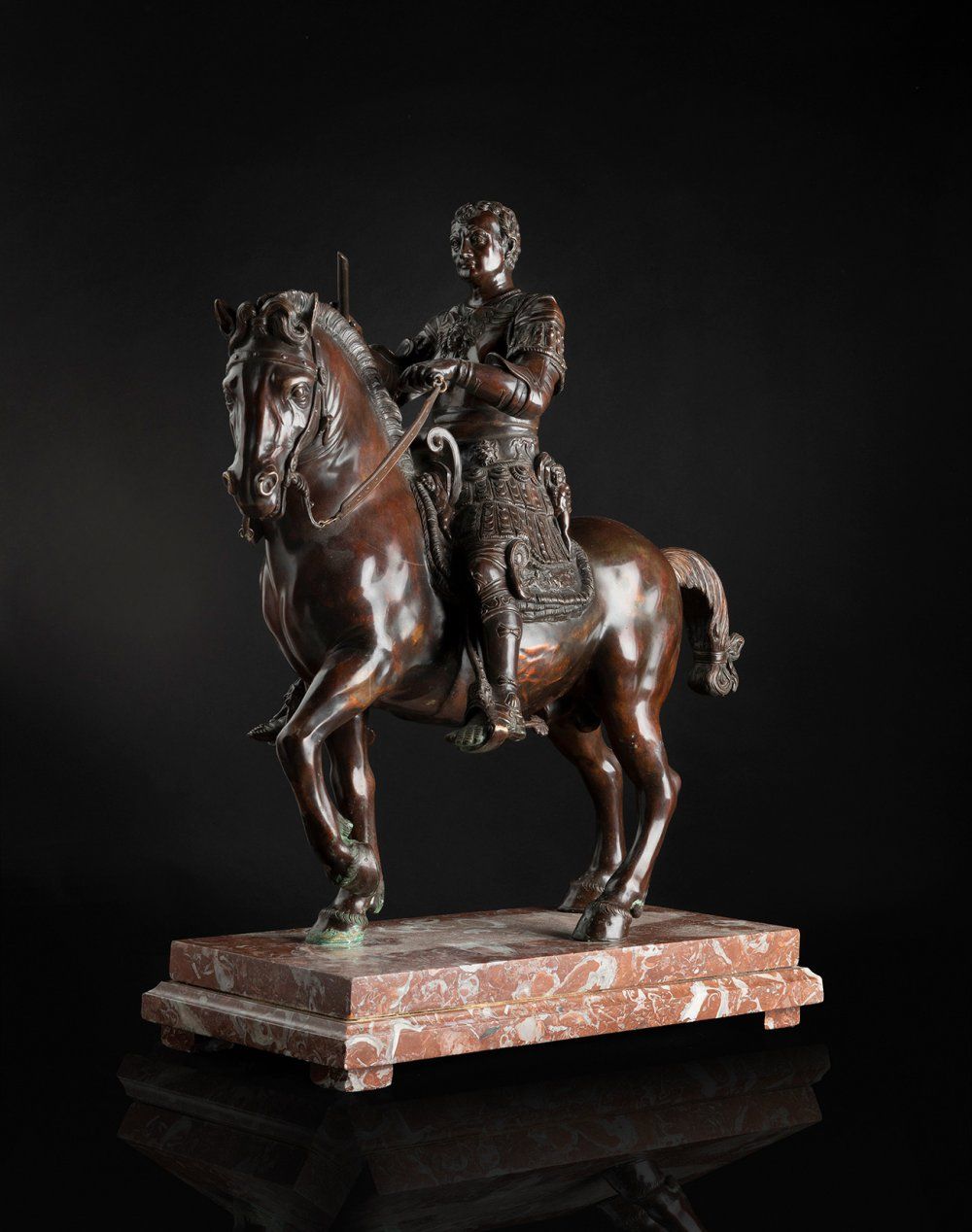Description
Equestrian sculpture of Condotiero Gattamelata. Italy, Grand Tour, 19th century. Bronze sculpture with marble base. Measurements: 57 x 56 x 29 cm; 8 x 49 x 24 cm. Sculpture made in bronze during the Grand Tour representing the condottiero Gattamelata according to the Renaissance sculpture made by Donatello in 1453, today in the Piazza del Santo in Padua, Italy. It is the first full-size equestrian statue of the Italian Renaissance. The term 'Grand Tour', which first appeared in Richard Lassels's 'Voyage d'Italie', was used to define the long journey through Europe, especially Italy, which was regularly undertaken by young British aristocrats from the 17th century onwards, but especially throughout the 18th and 19th centuries. The purpose of the journey was for young people to become acquainted with the art and culture of mainly France and Italy, to admire classical art at first hand, to learn or improve their knowledge of languages, and to establish contacts and relationships with the cultural and political elites of these countries. Travellers were often looking for pieces with which to start their own art collections, objects to take back to their places of residence as souvenirs. For this reason, workshops specialising in the replication of Roman pieces, both in bronze and marble, sprang up, some of which acquired a great reputation.
32
Equestrian sculpture of Condotiero Gattamelata. Italy, Grand Tour, 19th century. Bronze sculpture with marble base. Measurements: 57 x 56 x 29 cm; 8 x 49 x 24 cm. Sculpture made in bronze during the Grand Tour representing the condottiero Gattamelata according to the Renaissance sculpture made by Donatello in 1453, today in the Piazza del Santo in Padua, Italy. It is the first full-size equestrian statue of the Italian Renaissance. The term 'Grand Tour', which first appeared in Richard Lassels's 'Voyage d'Italie', was used to define the long journey through Europe, especially Italy, which was regularly undertaken by young British aristocrats from the 17th century onwards, but especially throughout the 18th and 19th centuries. The purpose of the journey was for young people to become acquainted with the art and culture of mainly France and Italy, to admire classical art at first hand, to learn or improve their knowledge of languages, and to establish contacts and relationships with the cultural and political elites of these countries. Travellers were often looking for pieces with which to start their own art collections, objects to take back to their places of residence as souvenirs. For this reason, workshops specialising in the replication of Roman pieces, both in bronze and marble, sprang up, some of which acquired a great reputation.
